Each gardener dreams to decorate your homeland, beautiful and bright plants, which, in turn, do not require excessive care. In this case, you can pay your attention to fragrant herbs that will certainly become an excellent solution for creating unique garden compositions. Quite often, on the flower beds, you can meet the stems of the stems, on the tops of which attract the bright inflorescences of blue, purple, pink or white shade. Many confuse this plant with mint or melissa, but in fact it is a distant relative of all famous fragrant herbs, whose name is a cat.
Thanks to relative unpretentiousness and resistance to environmental conditions, the plant can be planted on a nursery area, thereby creating enough unusual landscapes. Kotovnik, landing and care in the open soil for which, even the novice gardener, will certainly become your favorite plant.
In this article, we consider how the kittnik looks like, we note the characteristics of popular varieties of this herbaceous plant. We give important rules and nuances of the process, how to raise the cat in its plot.
Features and Morphological Description of the Kotovnik
Plant Kotovnik is considered a rather amazing culture that is popular not only at the gardeners and owners of household plots, but also in the Feline family. This grass contains essential oils that form specific smell of a kittnik, embaring cats and cats. The aroma emanating from the plant has on the usato-striped effect, similar in its action on the smell of Valerian: cats begin to run, rushing on passersby, reserved meow, after which they fall asleep with a strong sleep. If the cottberry grass appears on the site, then your favorite will certainly appreciate this innovation and will be constantly being near.
Kotovnik is an annual or many years of herbaceous plant, which belongs to the family of clarotonic or lubber. The natural habitat of this amazing plant is the territory of the Northern Hemisphere, where the Kotovnik spread almost everywhere. It can be found in the nature of European and Asian countries, as well as in Africa and America. In Russia, this plant was also widespread. Strengthening stems with beautiful inflorescences can be found on the European part of the country, in Central Asia, in the North Caucasus and in Western Siberia. Kotovnik prefers to grow on wasteland, forest glades and slopes. Often this plant can be seen near the landfills and on roadside territories, on the roads.
The scientific name of the Kotovnik "Nepeta" occurred from the name of the Etruscan city of Nette, on the outskirts of which was noticed by this grass in large quantities. Very often you can meet completely different names of the Kotovnik, among which field balm, cathedral of mint, Matoshnik, sore grass, non-robes, cat feeding, Forest nettle, Sorokiage, Shandra. All these names received a plant for several reasons: because of the huge love of cats to the kittnik, from therapeutic properties, appearance and applications.
Kotovnik's description:
- The kittnik is a perennial or annual to the most part herbaceous plant, although there are species that are represented by shrubs and semi-stabiliques.
- In its appearance, the cottberry is very similar to mint, therefore is a close relative to the whole famous fragrant plant.
- In height, this plant can reach an average of 10 cm to 1 meter, it all depends on the specific type and variety of the cottberry.
- The root culture system is a strong branched rhizome, which possesses one feature - it is very quickly treated. Thanks to the rapid growing of the rhizomes, the plant forms peculiar curtains consisting of shoots and accositous inflorescences. In addition, such a structure of the roots allows the Kotovnik to adapt well to various conditions of growth, for example, in Siberia or in the Urals.
- From the rhizoma, the high stem, which has side processes. This escape can be represented by or by the next.
- The distinctive characteristic of the plant is the fact that the stem, like the cutters of the leaves, is completely covered with input.
- The leaves of this plant are not a large, oval or heart-shaped shape with a served saw edge, which is very reminded by mint leaves.
- The sheet plate has a recognizable green-gray shade, the surface is denomated.
- The flowering of the kittover begins in about middle June and lasts until the autumn itself, which is undoubtedly an attractive factor for gardeners.
- Flowers of a small size, having an asymmetrical shape. In addition to the petals at buds, there is a zev and a lip on which dark dots are always present.
- Flowers are assembled on the tops of shoots in long ear-shaped inflorescences, which are painted in white, blue, purple or purple shade.
- During the growing season and flowering, the kittnik has a unique smell. In the spring it smells like geranium and roses, and later the light lemon fragrance becomes a distinguishable lemon fragrance.
- Flowers attract a huge number of bees, so the plant is considered excellent honey.
- After biting, the buds begin to ripen the fruits of the cat, which are seed boxes within which smooth brown nuts are located - this is seeds that are 4 pieces in one fruit.
- The seeds of the Kotovnik are very small and light, in 0.5 grams of seeds can fit up to 1000 such nuts.
- It is noteworthy, if you crush the cat after flowering, then by the end of August you can wait for the second wave of the appearance of colors.
- The kittnik is considered an unpretentious plant that can easily withstand cold and heat.
- In addition to use in landscape design, the cottberry is used in industry, confectionery and soap industry. In this case, we are talking about essential oil, which is contained in the plant. Such an amazing plant is also used in folk medicine in the treatment of inflammatory respiratory processes, with anemia, glides invasions, headaches, with loss of appetite, as well as as a sedative preparation.
Using a kittnik in landscape design
There is nothing surprising that the Kotovnik enjoys greatly popular with gardeners and landscape designers when creating bright and unusual garden compositions. This plant has a number of features that are valued in gardening:
- Culture does not require special efforts in growing.
- Landing and care is completely simple and under the power of any gardener.
- Perfect can grow throughout the northern hemisphere.
- The kittnik gets well with the most various garden crops, so it is a valuable copy in the garden design.
- The plant is characterized by quite a long blossom, which can last about 2 months, and sometimes it is re-occurring.
- Pleases gardeners and beautiful coloring of the colors of the kitnik.
In connection with all positive qualities, the kittover is constantly used in various landscape design options:
- Kotovnik is often used to create alpine slides, rocaries, mixboraders and flower beds.
- This plant is ideal for emphasizing the beauty of larger and bright plants, such as roses or peonies.
- Kotovnik in the garden can be planted as a curb plant, as well as for the framing of garden tracks and fences.
- This herbal culture is combined with various plants: lavender, geranium, sage, iris, oregano, yarrow, roses, peonies and other plants.
- It looks beautifully a kittnik and in single landings against a green lawn background. When expanding the curtains, the plant looks like a blue or blue cloud.
- You can grow an original garden composition from various types and varieties of cottberries, which differ in size and painting inflorescences.
Variety of types and varieties of cotton
Today, in culture and nature there are about 250 different types of Kotovnik, on the basis of which constantly breeders are withdrawn by all new and new varieties of an amazing plant. Consider the features and characteristics of the most popular species and varieties of the cat.
Catnip
- This species of the cat is considered the most popular and common. Very often, this plant is called "cat mint".
- In addition, very often, in the people, it is called the cottberry lemon for a pleasant lemon fragrance, which so attracts all the cat's family.
- Kotovnik Feline in Europe, Siberia, Caucasus and Kazakhstan is widespread.
- It is a perennial plant, which in height can reach an average of 40-100 cm.
- The bustice is formed by reprehensive branched stems that are covered with a brown bark.
- The leaves of the egg-shaped form, in length can reach 2-8 cm. Sheet plate is slightly pubescent, has a served edge, painted into a rich green color.
- Flowers are small, collected in loose-shaped cellular inflorescences. Purplestorm is present on colors.
- Blossom begins in June-July, during which the flowers exude spicy lemon fragrance.
- A variety can sometimes be damaged from severe frosts, but then quickly restored.
- The most popular variety of cat cats is "Citriodora", which is characterized by blue-blue flowers and a strong lemon aroma. It is this variety that is used to obtain expensive essential oil.
Kotovnik Fasten
- It is a hybrid herbaceous plant, which is most often used in for decorative purposes in the household plot.
- In height, the plant can maximize 30-40 cm.
- Strong dense stalks are covered with small rounded leaves with a sawd edge.
- The leaves are slightly pubes and have a gray-green shade.
- On the tops of the shoots are formed lush-like inflorescences, which consist of a large number of small colors.
- Depending on the specific variety, flowers can have a different shade: white, cream, blue, blue, purple, purple.
- The plant of this species is distinguished by unpretentiousness and resistance to frost and various cultivation conditions.
- The most popular varieties of this species include the following: "SELECT BLUE" - it is distinguished by beautiful, large inflorescences of blue-purous colors, "Six Hills Giant" - is one of the largest varieties with purple flowers, Superba Buhl - a medium height plant with Purple-blue flowers and Sro-green leaves.
Kisteid kittnik
- Another popularly popular variety for decorative decoration of the site.
- It is a herbian perennial plant, which in height can reach about 40-45 cm maximum.
- Stems in the plant are dense and strong, thickly covered with oblong gear leaves of a gray-green shade.
- On the tops of the shoots bloom are blooming blue, lilac or violet color.
- Popular varieties of this variety: Walkers Law - Plant 60-90 cm high in saturated blue-lilac inflorescences, Blue Wonder is the middle-grade variety-like chicken-shaped inflorescences of dark blue color, SnowFlake - is a beautiful compact bush 60 cm high with snow-white inflorescences.
Kotovnik Mussini
- It is a kind of low-level plants whose height does not exceed 15-20 cm.
- The plant is formed slightly lowered stems, which are thickly covered with wide gray-green leaves with a wrinkled surface.
- In nature, the plant grows in Caucasian mountainous slopes.
- In June, on the tops of the shoots bloom the lavender-blue inflorescences, which decorate the garden to the most frosts.
Kotovnik Largender or Siberian
- It is a perennial plant with a height of 60-100 cm.
- The bush is formed by dense and strong upright shoots with good branch.
- The stems are covered with the downsion and oblong lanceal leaves of a gray-green shade. The length of the leaves can be 2-5 cm.
- Loose corpid inflorescences consist of small purple colors and are located on the tops of the shoots.
- In nature, the cottberry large-flowered can be found on steppe bows and rocky slopes of Siberia, Mongolia and Central Asia.
Bottling reproduction: the most common ways
The cultivation of the kittnik on the household site is not difficult, since this plant is distinguished by unpretentiousness and resistance to the surrounding conditions. To breed this amazing and unusual plant, it is enough to know the most suitable methods of breeding. First of all, representatives of the family of Clanotkov are multiplied with the help of seeds, but the reproduction of vegetative methods can be used without any problems, such as grilling or division. Consider the main features and rules for using each method.
Seed reproduction of Kotovnik
- The seeds of the Kotovnik can be sung directly into the open soil in the fall under the winter, then the seedlings will appear in April and the young plant in the same year will delight with flowers. As an option, seeds can be seen in the open soil in the spring, but in this case the flowering will come only next year. In any case, with the seed growing of Kotovnik, from the second year, all plants begin to produce up to 7-15 shoots and massively blossom.
- Most often, gardeners are grown by the seedlings of the cottberry from seeds, which is subsequent to open ground.
- First of all, it is necessary to buy seeds of the plant or to assemble them independently if an adult and blooming kittnik are growing on your site.
- Each fruit contains 4 nuts, so it is better to collect more. The seeds of Kotovnik have a rather low germination. You do not need to strategy.
- Seeds in the seedlings must be seized in about mid March. To do this, you can use containers or seating.
- First of all, it is necessary to prepare light, loose and nutrient soil.
- Next, make a depth of no more than 1 cm on the surface of the well, the distance between which should be approximately 5 cm.
- After sowing the surface you need to hide abundantly. If it is a container, then it must be covered with a film.
- A few weeks later, you can see young shoots. It is worth noting that the first time the seedlings develop very slowly.
- When 1-2 pairs of strong leaves appear on seedlings, they are seated in separate pots or tanks for increasing the roots.
- In the open ground, the seedlings of the Kotovnik are planted when it reaches a height of 10-12 cm and it will have at least 3 pairs of leaves.
Bottover breeding by rhizome
- The reproduction of the Kotovnik division is considered the easiest and most quick way, which is most often used by gardeners.
- You can share rhizome throughout the spring, starting from the beginning of May, when the soil is completely warmed.
- To do this, it is necessary to neatly dig up the adult plant of the kitthips entirely, after which a slightly smooth the root system to remove the soil.
- It is recommended to use clean and sterile tools to divide the rhizome and not harm the plant.
- You can share your bush with your hands, while it is important to remember that there are several growth points on each decene.
- Immediately after division, young seedlings need to land at a permanent place, pre-carefully reproach and fertilizer.
The reproduction of the Kotovnik Chenkah
- To use this method, it is necessary to have an adult plant on its site.
- Cut the cuttings is recommended in the spring, about mid-May.
- On an adult bush with a developed root system, you need to choose young and strong shoots and cut the cuttings with a length of 10-12 cm that every cutlets have several intersals and couples of leaves.
- It is not necessary to process the cuttings stimulators, however, it is possible to place the planting material into the container with the Kornin solution for a couple of hours to accelerate the roots.
- The cuttings are planted into the greenhouses or in the open soil and on top separately are covered with each plastic bottle or glass jar.
- Bottles cuttings are very quickly rooted and allowed their own root system.
Landing of Kotovnik in Outdoor Soil - Phased Description
As noted above, landing and care for the cottberry is quite simple and with all the processes under the power to handle even the novice gardener. The main thing, first of all, to acquire or independently grow high-quality and healthy planting material and find on its site the most suitable place for landing. Consider all the stages of the preparatory work and the landing actually in the open soil.
Stage 1. Selection and purchase of the landing material of the kittover
- First of all, if you wish to grow mint on your sector, you need to purchase high-quality planting material. If you wish, you can independently grow by the seedlings of the kittnik.
- It is also important to decide on the choice of a specific type and variety of the cotton. Almost all hybrid species are perfectly transferred both heat and winter frosts.
- Buying seedlings or seedlings is recommended only in specialized garden centers or nurseries, which are professionally engaged in breeding plants.
- Before buying, it is recommended to carefully check the selected seedlings. They should not be visible damage and signs of disease. The leaves must have a smooth gray-green color without yellow and white spots. Soil in the container should be clean and moistened.
Stage 2. Selection of landing sites and soil preparation for Kotovnik
- The second important stage of preparatory work is the choice of a suitable place for landing.
- This plant prefers to grow on solar and well-lit plots. You can plant seedlings and in a small shade.
- It is important to pick up a landing area on the hill, as in lowlands and in places of close grounding of the groundwater root system of the Kotovnik can start rotting.
- Places for this plant need a lot, so you make sure that large cultures do not grow nearby.
- Soil Kotovnik prefers light, loose and fertile.
- It is necessary to engage in the preparation of the landing site in the fall, when the site is thoroughly leaving about 1 bayonet shovel. In the process of this, it is necessary to add 3 kg of humidiation into the soil, 20 grams of ammonium nitrate, 30 grams of superphosphate and 10 grams of potassium sulfate. All this is well drunk.
Stage 3. The process of landing of the kittover in open ground
- In the spring, when the snow melts and the soil warms the chosen place. It is necessary to quickly explode and dissolve again.
- Next, plenty of seedlings or seedlings so that in the future it was easy to extract them.
- At the selected place, make small landing wells, the distance between which should be at least 30 cm. If you plant more tall varieties, then make a distance between the individual plants of 40-50 cm, since they will continue to grow strongly.
- In each well, you can add some pure river sand.
- Carefully remove seedlings from the pots, trying not to damage the roots, and fall out in the prepared wells.
- After landing, all young plants need to be poured, and the soil around them is tortured by peat.
Growing Agrotechnology: Secrets and Nuances of Care
Caring for Kotovnik is absolutely not difficult, it is enough to regularly pay attention to him and the plant will delight the beautiful riot of flowers.
- Watering. The kittnik is considered a sufficiently drought-resistant plant, so watering he needed rare and moderate. It is enough to water bushes 1-2 times a month.
- Loosening and mulching. A couple of times per season it is necessary to loosen the soil around the plants to ensure the influx of oxygen. To minimize these processes, it is recommended to plug a layer of mulch.
- Feeding The plant speaks well for the introduction of complex mineral fertilizers. For the first time they can be contacted before the formation of buds, the second time fertilizer is brought after trimming.
- Trimming. Kotovnik sufficiently negatively refers to pruning. However, if you trim shoot half, then you can achieve repeated flowering in the fall. Do not cut the stems more than the specified, otherwise the plant may not survive the winter.
- Shelter in winter. The kittnik is considered a frost-resistant plant, however, in case of a honest winter, it is recommended to cover the bushes of the fallen leaf or sweetheart.
Kotovnik - Photo.
Today on the Internet you can find a large number of ratings about Kotovnik, judging by which it can be said with confidence that this plant is an excellent solution for creating unique garden compositions. Cat Mint due to their unpretentiousness and sophisticated beauty won love and recognition of gardeners and designers who include this plant in their garden masterpieces.

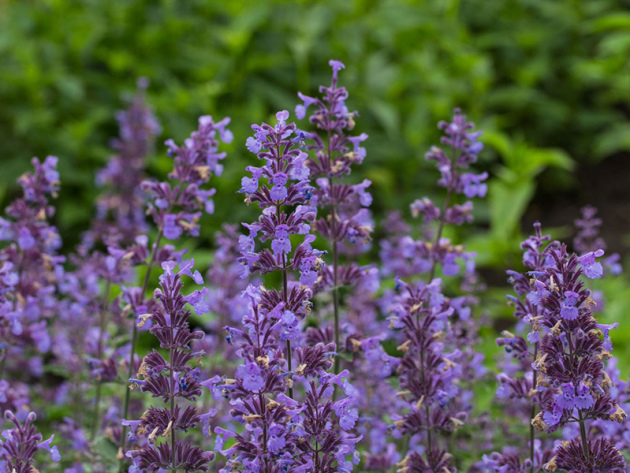
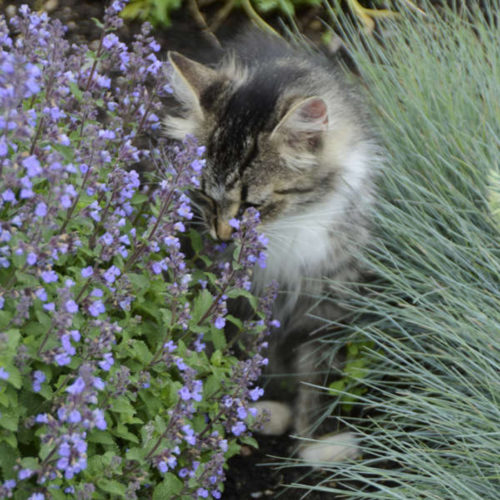
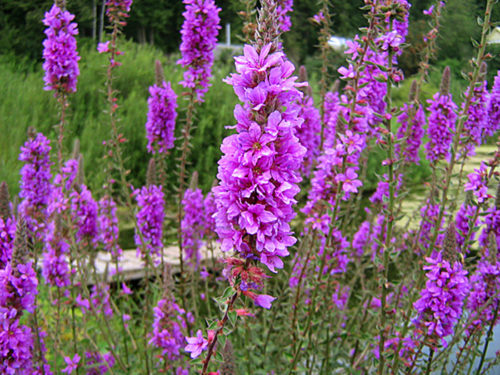
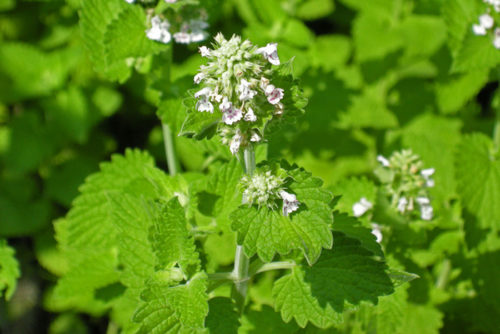

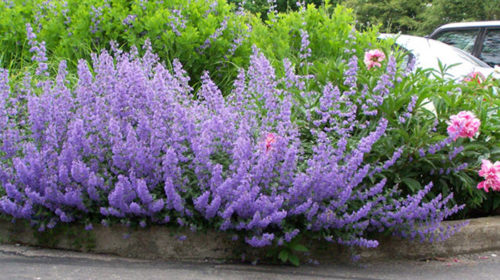



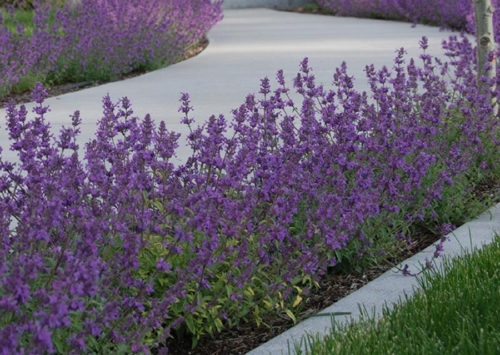


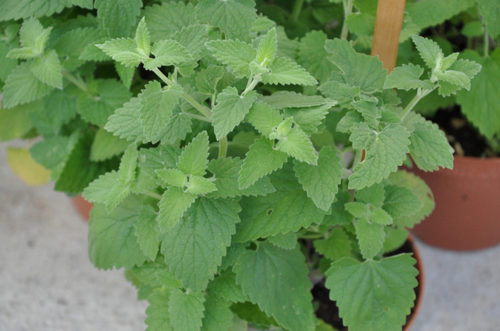

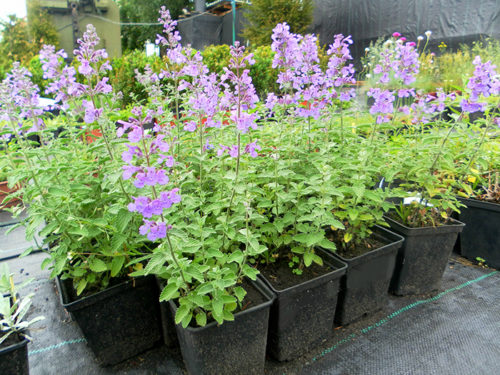
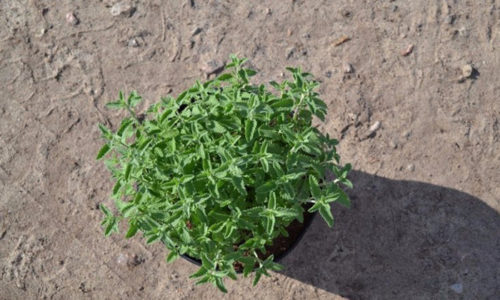

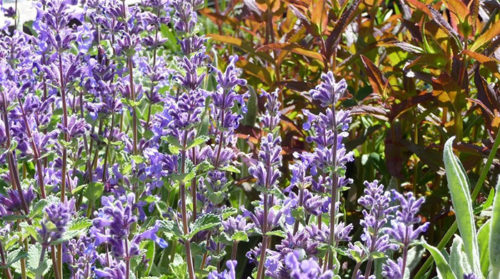
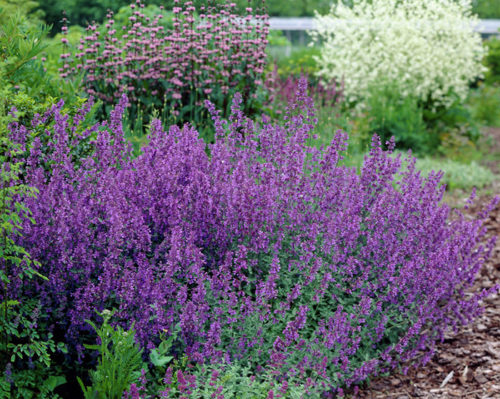














 Start a discussion ...
Start a discussion ...